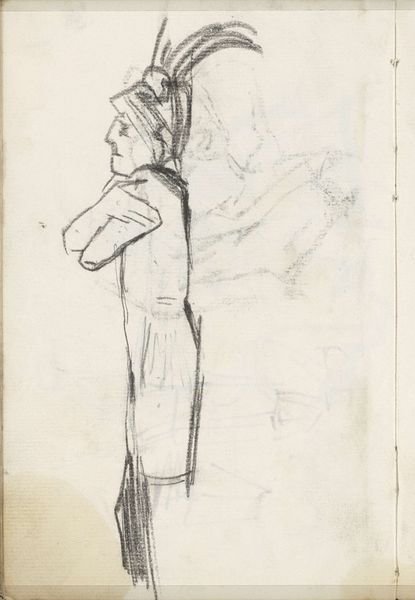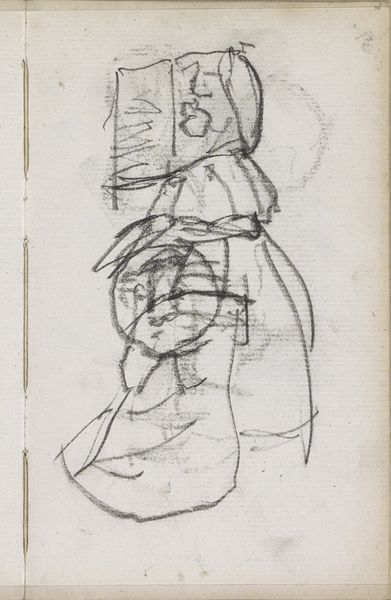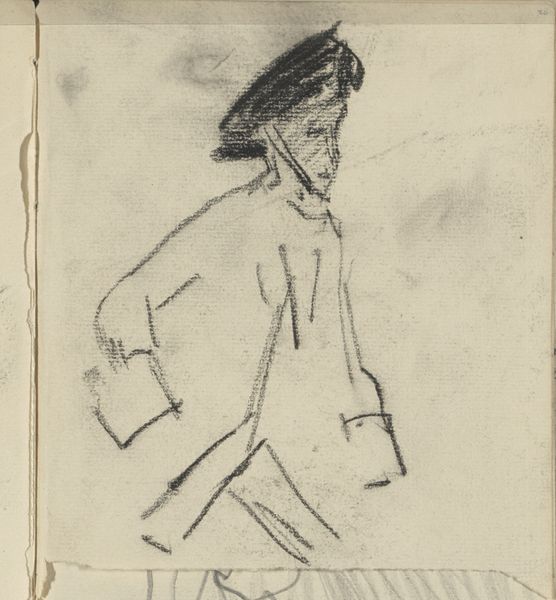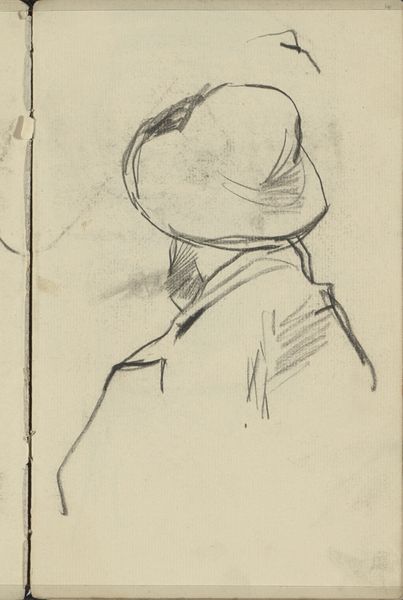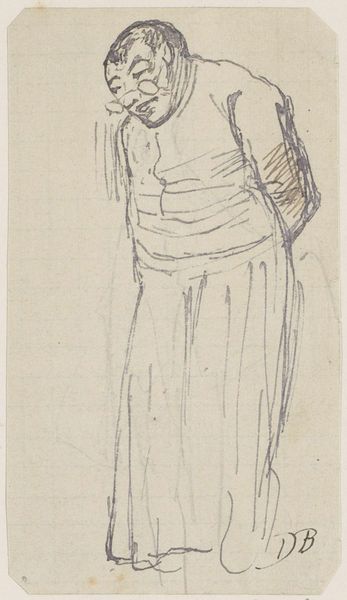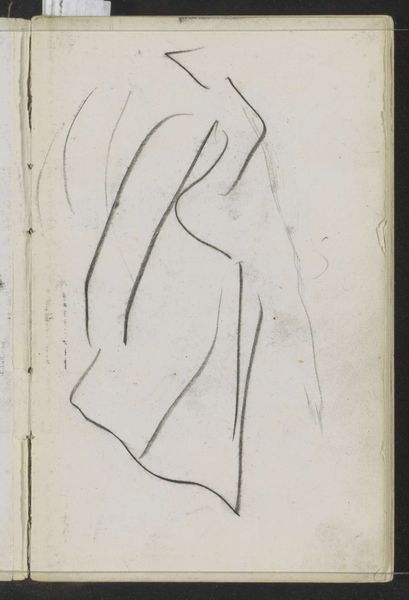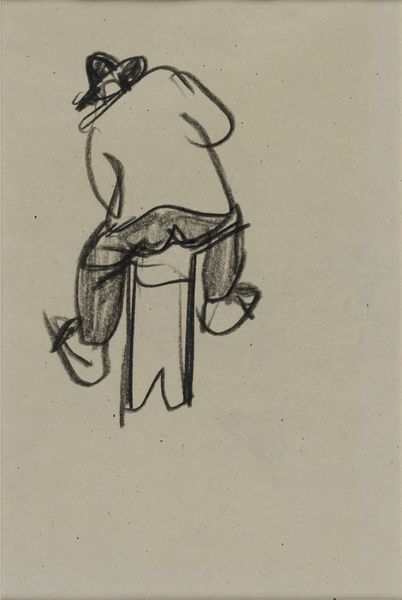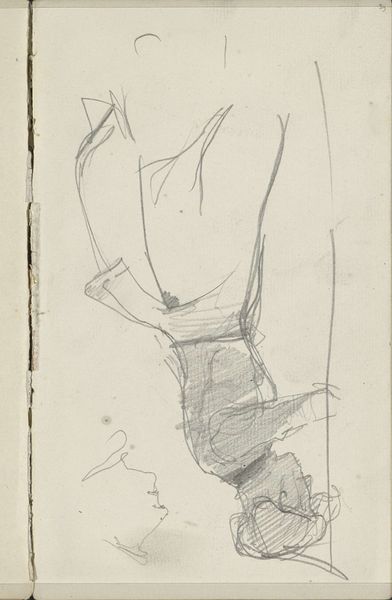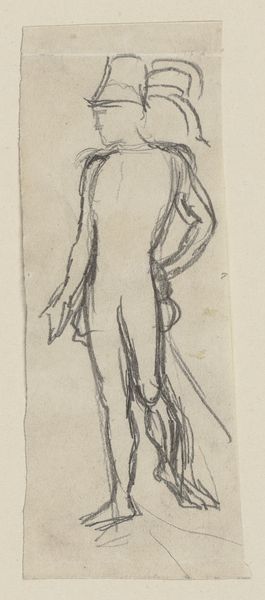
Copyright: Rijks Museum: Open Domain
Curator: The artwork before us is a pencil drawing by George Hendrik Breitner, entitled "Jonge vrouw met een hand in haar zij," created sometime between 1886 and 1903. Editor: Immediately, I'm struck by the pose. The way she stands with her hand on her hip conveys a certain confidence, even defiance, despite being seen from behind. Curator: Indeed, the pose is deliberate. Consider the societal context of late 19th-century Amsterdam. Women were negotiating changing roles, challenging traditional expectations in both private and public spheres. This stance can be read as a quiet assertion of agency. Editor: The rapid strokes! Breitner captures her essence with minimal detail. I wonder about the symbolism behind presenting her from this particular vantage point, however; are we intentionally kept at bay? It's a fascinating composition. The unfinished shape above her, it reminds me of an eclipsed moon. Curator: I read it as an unfinished sketch of a hand or face, possibly representing further studies by Breitner. Breitner was, after all, deeply embedded in depicting everyday life of Amsterdam’s working class and would fill many sketchbooks. Also, keep in mind that while identified as Impressionist, he was not fully embraced by the Parisian school and developed his particular take, influenced by literary realism and an interest in capturing movement and emotion through observation. It aligns perfectly with his focus on candid moments. Editor: And yet there's an evocative ambiguity that the unfinished nature contributes. I notice how her dress hangs, like a sort of modern toga or ancient cloak. Is this also a modern rendering of some long held ideas? I find the tension between classical echoes and candid immediacy captivating, speaking to lasting questions of representation, what does a woman's presence _mean_ in society? Curator: The fluidity and quickness do invite multiple interpretations; there's a clear lack of adornment and luxury in the drawing's subject matter. She is present. But one wonders, from what strata? Who are these 'jonge vrouwen'? Breitner rarely included biographical information and even avoided his subjects when sketching them. The gaze in many ways, returns back at the observer with its implied and constructed questions. Editor: It's fascinating how such a simple sketch can unlock such a complex set of questions and associations. There are far more questions implied in these works, both explicit, and buried. I'm drawn to revisiting the way lines move and how shadow gives us information while retaining a careful guard. I think the artist wants us to do more looking! Curator: And so it is with the best works, they invite introspection into both self and culture. Thanks for the analysis!
Comments
No comments
Be the first to comment and join the conversation on the ultimate creative platform.


